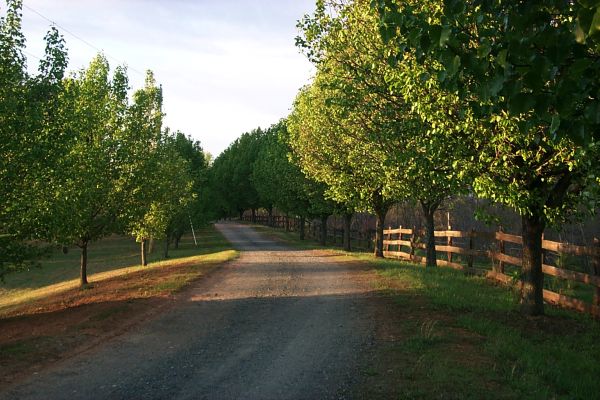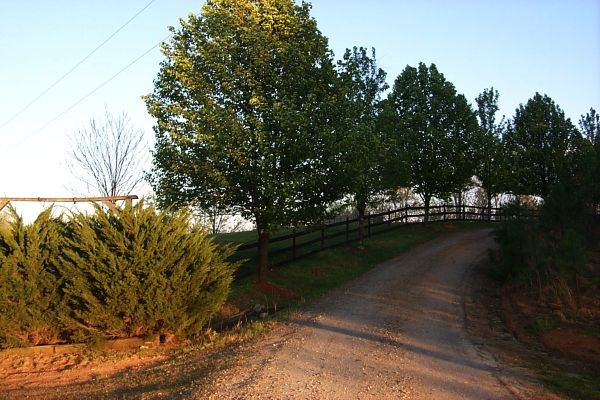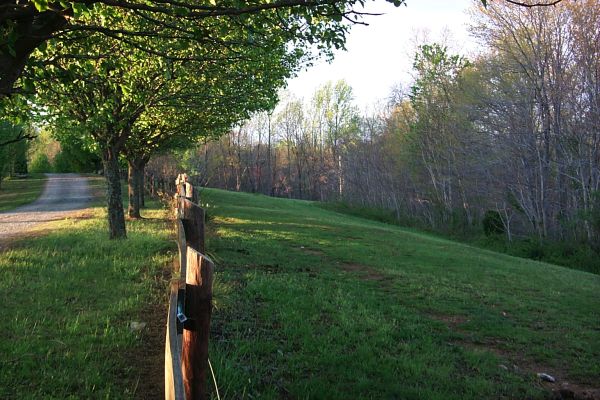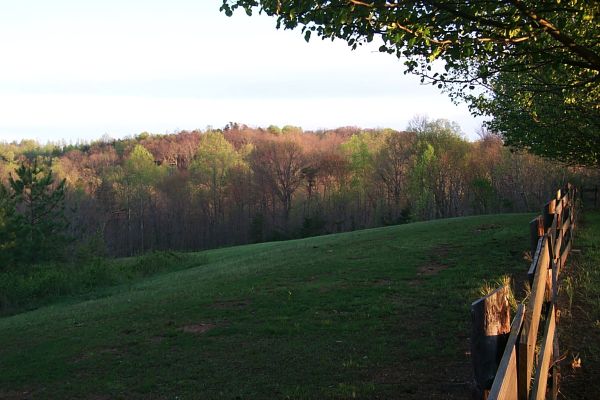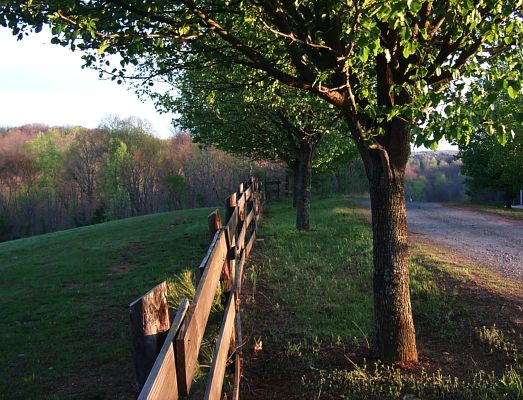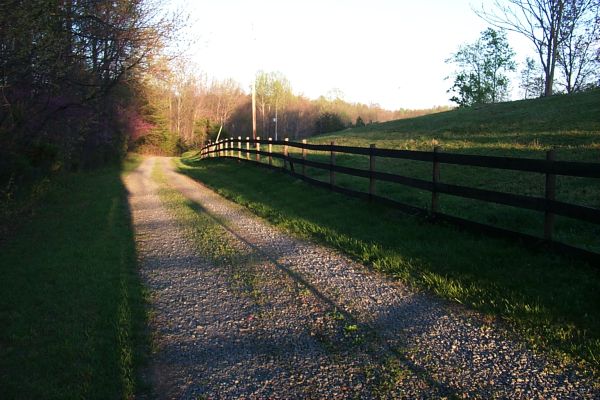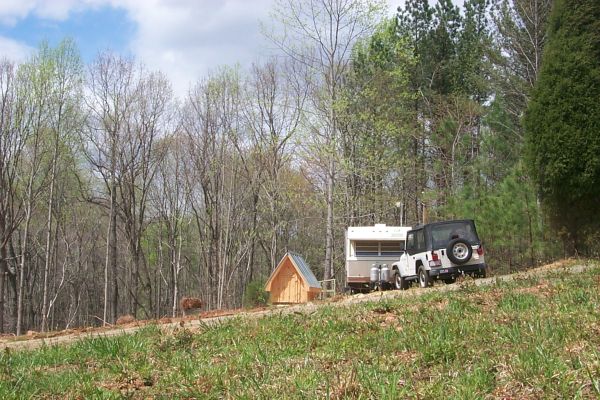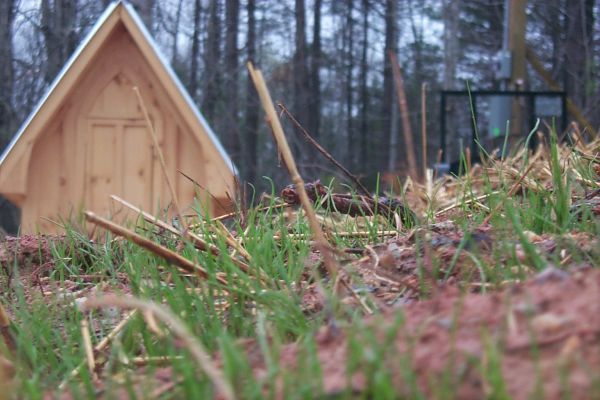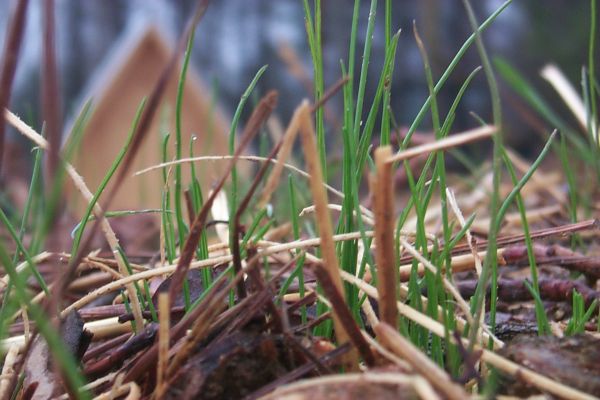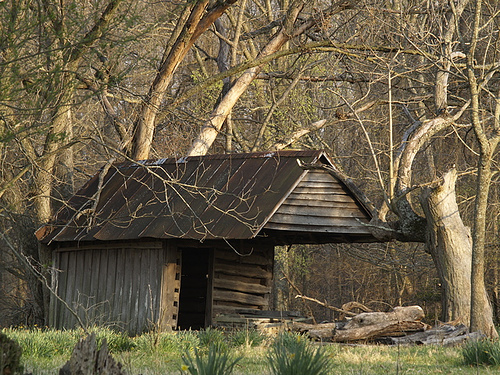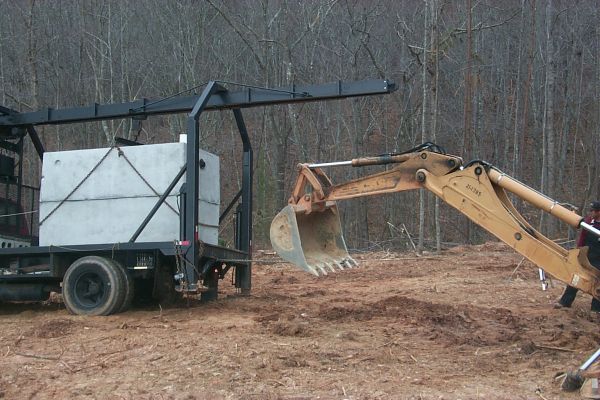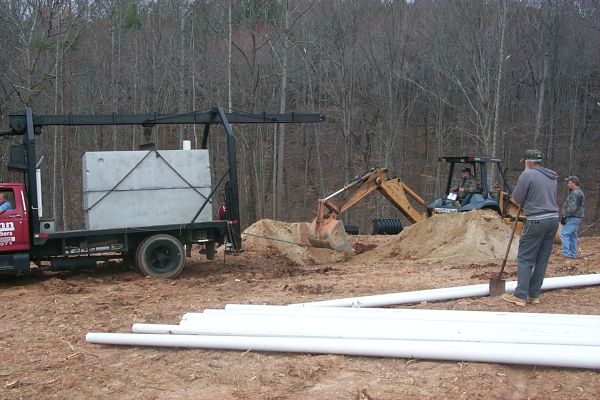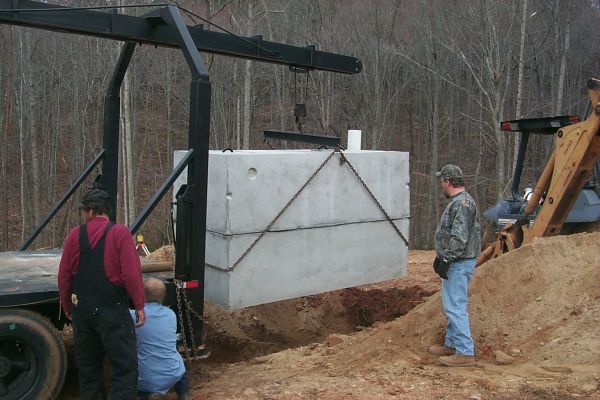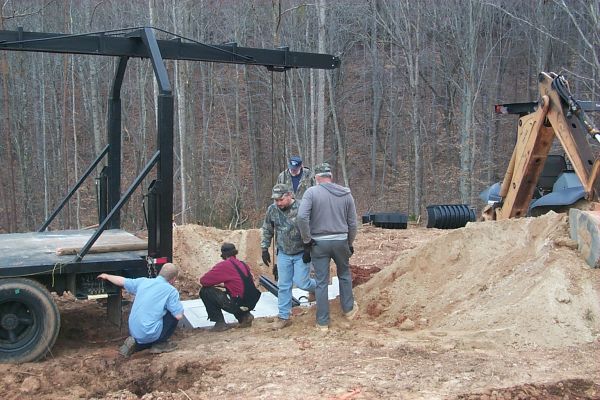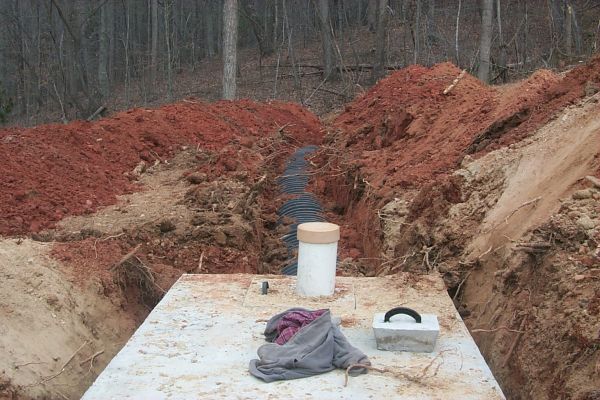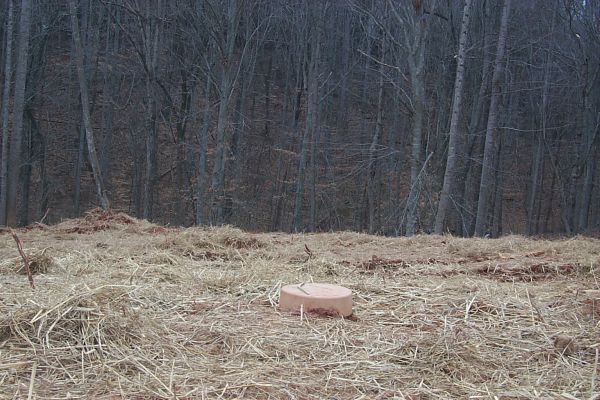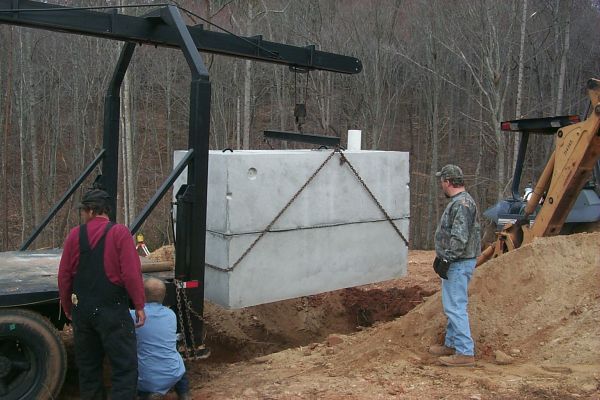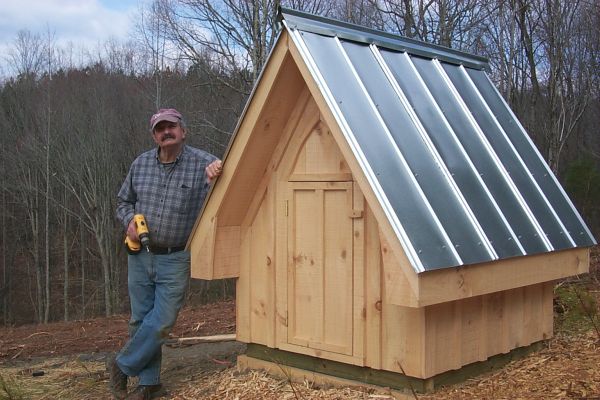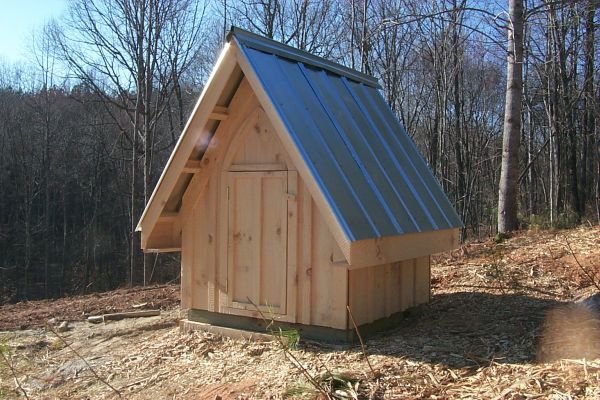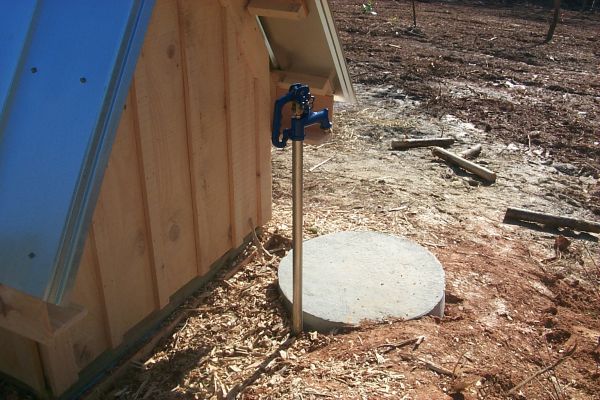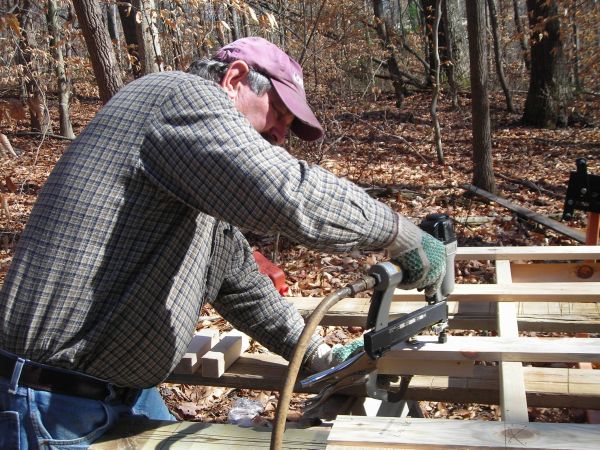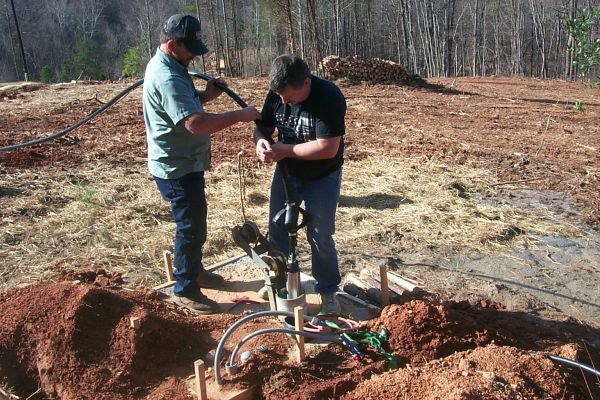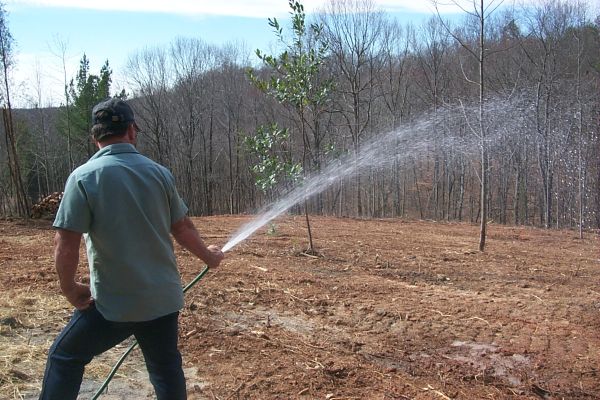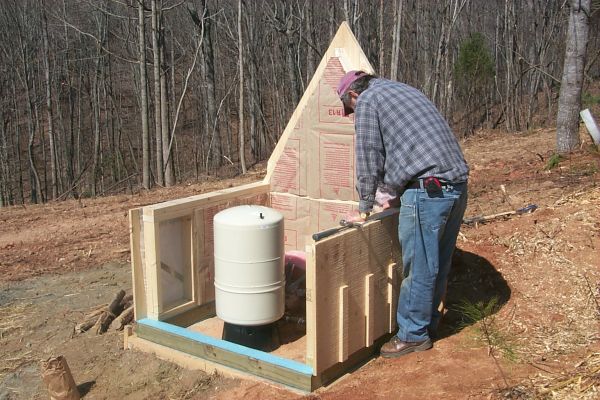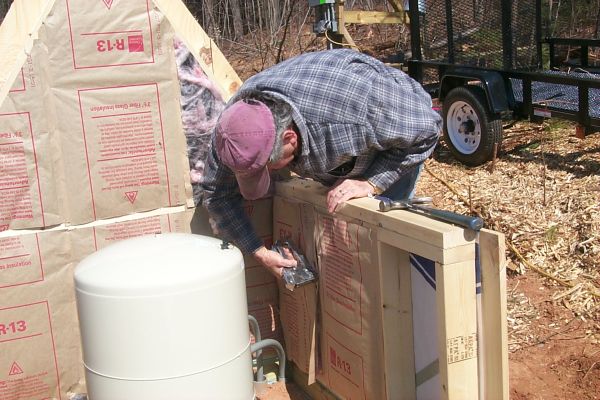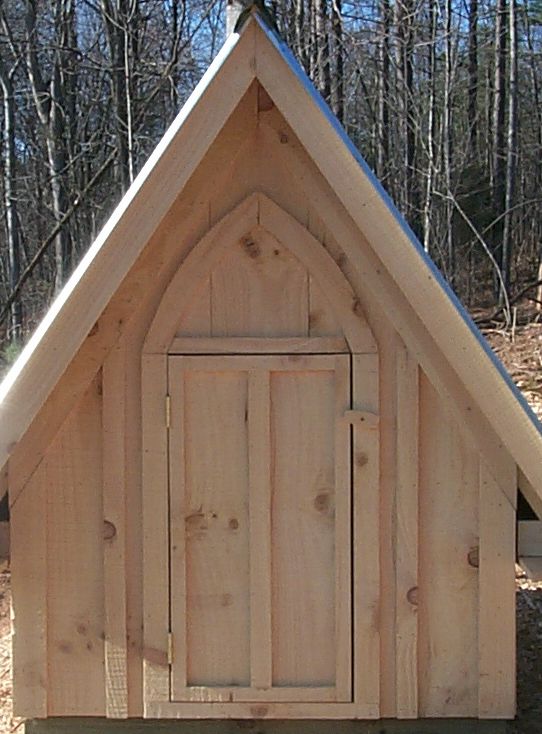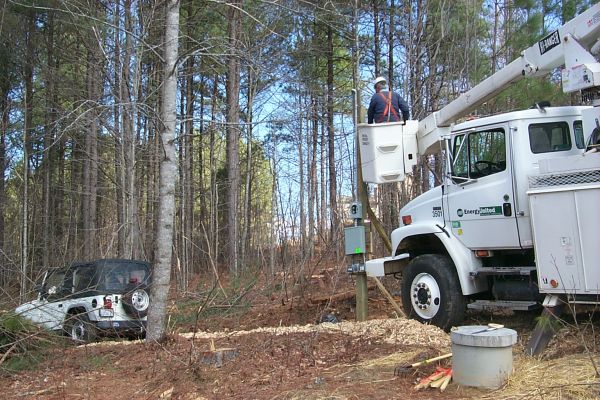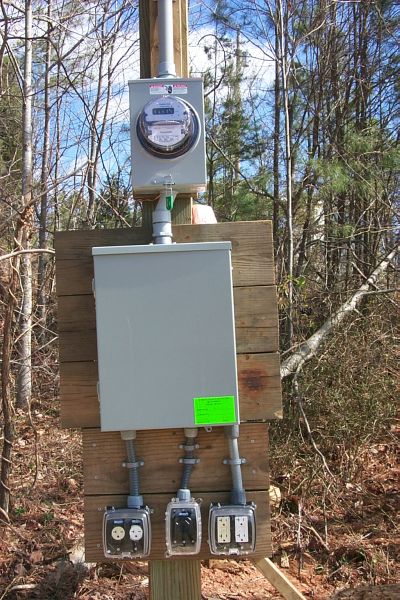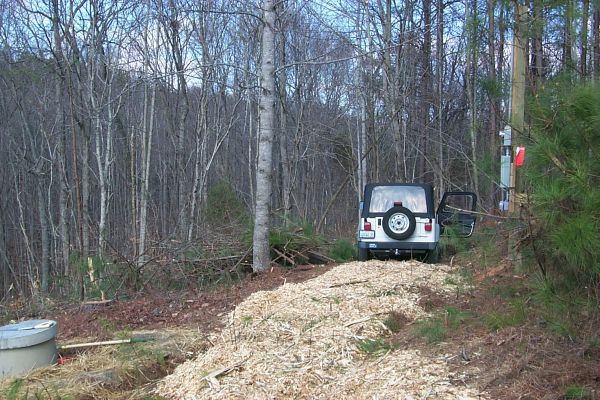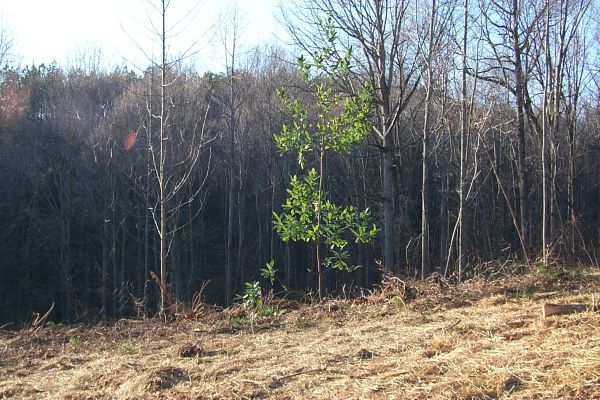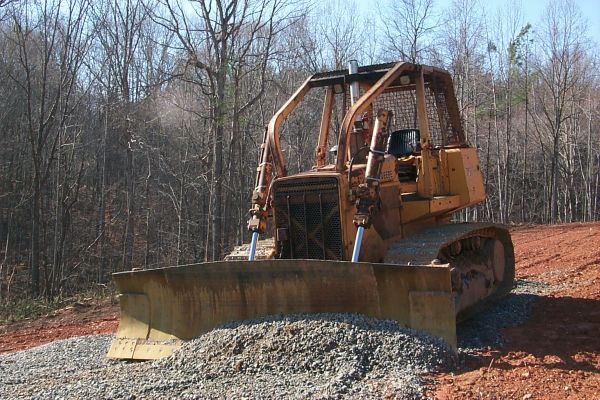
The evil machine at rest. It started raining as stone was brought to the driveway, and work had to stop. So the bulldozer waits in place for the ground to dry.

Is there anything uglier than a ditch? I spent hours today working on starting grass in it.
This has been a stressful week. I had far from recovered from having logging machinery on my land. But the septic tank guy and others convinced me that I had no choice but to remove the stumps and that the time to remove them all is now. I found someone nearby with heavy machinery, including a track hoe and a bulldozer. He said he’d prefer to use the bulldozer for the job. He promised that the stump removal would not take away my precious topsoil. We agreed that he would recut the drainage ditch along the road that was crushed by the loggers. And we agreed that he would make a driveway, which he said needed to have a wide enough turnout and wide enough culvert that heavy trucks bringing building materials wouldn’t crush the culvert or run off the driveway. He said he could hide all the removed stumps and brush out of sight beside a ravine at my back property line. He said that it would be a two-day job. The arguments for bringing in a bulldozer are about making a temporary mess now for a better-looking and more productive outcome later.
We agreed on a price, and he started on Monday. By mid-afternoon Tuesday, he was done with everything but hauling the three truckloads of stone for the driveway. Just as the truck arrived with the first load of stone, it started to rain, hard.
I got dripping wet trying to spread annual ryegrass seed on my exposed topsoil. I more or less got it covered, though. The stumps and brush had as he promised magically disappeared. I drove back to Yadkin in heavy rain, certain that the downpour was washing gullies all across the acre that the bulldozer reworked. I took the day off on Wednesday and didn’t go to Stokes. It wasn’t raining, but I knew the ground would be too wet for me to work, and I resisted the temptation to go all the way to Stokes just to see what the rain had done.
Thursday morning I got my first look at everything since the bulldozer and the rain. A miracle: no gullies, no messy runoff, and the little stream was running clear. What a relief. I spent the rest of the day sowing ryegrass and fescue on the ditch beside the road. I spread a straw blanket over the entire ditch. It’s 200 feet long. I put a bale of in front of the culvert. The ditch is unlikely to wash out now. I hope the grass will grow.
As soon as weather permits (more rain is forecast for tomorrow) I’ll give the same straw-blanket treatment to the exposed earth beside the driveway.
The crew that is to put the pump in the well has been delayed. Now they say they’ll be out Monday or Tuesday of next week.
I can already see that I’ll be spending a lot of time this spring getting grass and wildflowers to grow. I’ve decided not to plant the apple trees until fall.
